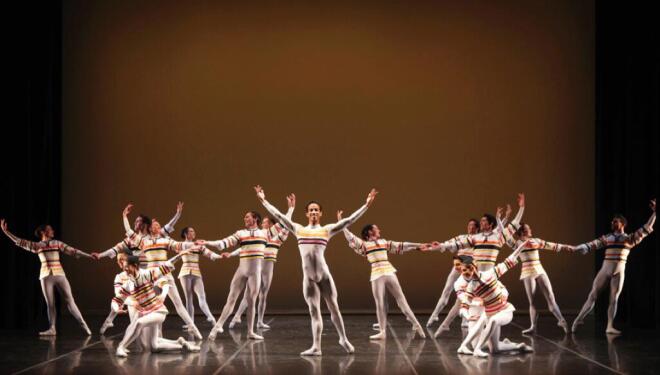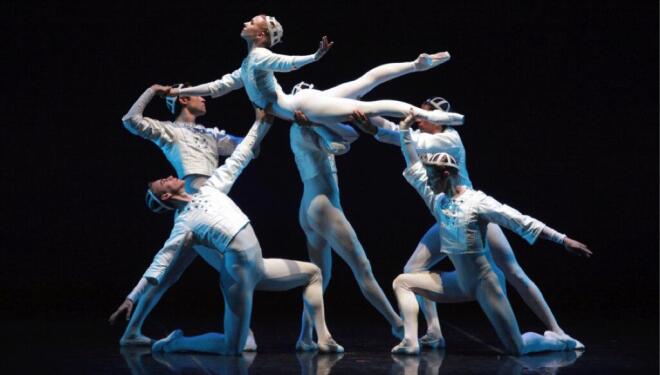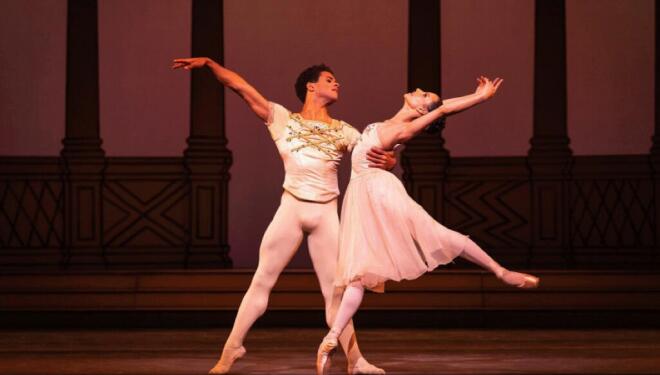
Yet, only a relatively small number of his works remain in The Royal Ballet’s repertoire; much loved works, to be sure, but hardly representative of the sheer richness and range of Ashton’s output.
It fell to the Floridian Sarasota Ballet, under the direction of the former Royal Ballet dancer Iain Webb, to fill in the gaps: having recovered many of Ashton’s semi-forgotten works, Webb’s Sarasota Ballet now has more Ashton in its repertoire than any other company; and in its first ever visit to the UK the company is showing us what we’ve been missing. The visit is part of a massive festival, Ashton Worldwide 2024-2028.
The first programme of its week-long residency at the Linbury Theatre consists of two 1940s pieces – Valses Nobles et Sentimentales and Dante Sonata – and the later Sinfonietta, dating from 1967.
Valses Nobles et Sentimentales, set to music by Ravel and designed in tones of burgundy and pink by Sophie Fedorovitch, looks old-fashioned in the best possible way.

The Sarasota Ballet in Sir Frederick Ashton's Valses nobles et Sentimentales - Photo: Frank Atura
Essentially a plotless ballet, it loosely follows the connections between ten dancers waltzing the night away framed by translucent screens that alternately hide and reveal. In the central trio a woman, Jessica Assef, seems undecided between two men, Ricardo Rhodes and Daniel Pratt.
Behind its innocent surface and flowing lifts, the choreography is, in fact, extremely precise and highly responsive to Ravel’s harmonies and dissonances. And as in the following two pieces it is fascinating to discern the kernel of future Ashton works.
Dante Sonata is quite a different proposition.

The Sarasota Ballet in Sir Frederick Ashton's Dante Sonata - Photo; Frank Atura
Set to music by Liszt and broadly inspired by Dante’s Inferno, it was created in 1940 and its mood reflects Ashton’s despair about WW II. On a gloomy stage (lighting recreated by Ethan Wall) two groups of barefoot dancers - Children of Light and Children of Darkness - confront each other in emotional waves of movement, the white Children of Light drawing upwards, the Children of Darkness, with their black markings, earthbound. It ends with no resolution.
The final piece, Sinfonietta (pictured top), brings a radical change of mood with more than a nod to the free, psychedelic 1960s. The dancers wear white tops with multicoloured horizontal stripes over white unitards, and dainty little black caps.
The choreography for the first and third movements of Malcolm Williamson’s music, respectively a Toccata and a Tarantella, is fast moving, with frequent changes of direction, requiring metronomic precision and slip-second timing from its eight couples. The Tarantella showcases one soloist, Ricardo Rhodes, with the other dancers criss-crossing the stage in a apotheosis of colour and movementIn. In contrast, the central adagio movement, Elegy, establishes a reflective mood: under subdued lighting a woman, Jennifer Hackbarth, is held aloft and manipulated by five cavaliers, all dressed in sparkly white. It is reminiscent of Ashton’s Monotones, created two years earlier, which remains very much in The Royal Ballet’s repertoire.
| What | Review: The Sarasota Ballet, Ashton Celebrated Programme 1 |
| Where | Royal Opera House, Bow Street, Covent Garden, London, WC2E 9DD | MAP |
| Nearest tube | Covent Garden (underground) |
| When |
04 Jun 24 – 08 Jun 24, 19:45 Sat mat at 14:00 Dur.: 2 hours 15 mins inc two intervals |
| Price | £15-£45 |
| Website | click here to book |



